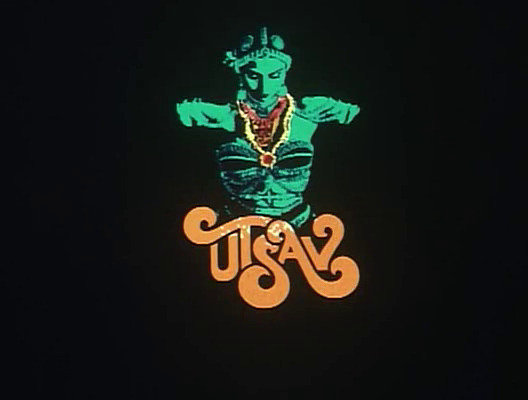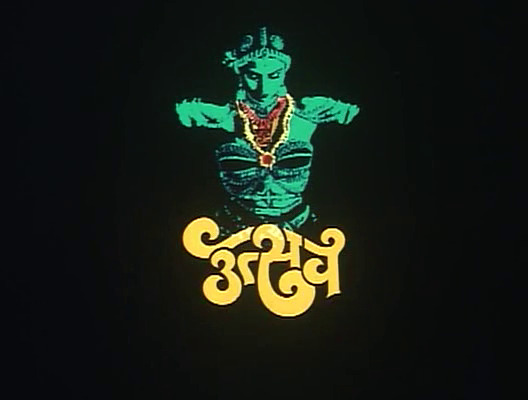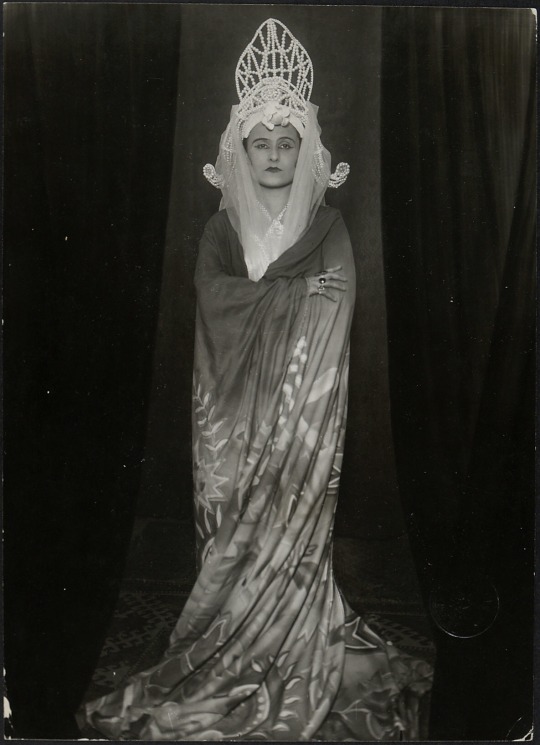#Vasantasena
Photo


Utsav (1984) // title cards
#utsav#utsav 1984#rekha#Girish Karnad#indian cinema#hindi cinema#cinema#films#movies#title cards#bollywood#old bollywood#bollywood movies#indian films#indian movies#indian actress#1980s#1984#world cinema#Vasantasena#classic cinema
103 notes
·
View notes
Text
the one thing I can't understand-it is probably because of my own space, time, circumstances- is why Vasantasena in Utsav (1984) falls in love with Charudatta and why she wants to give up her life as a powerful courtesan to marry a man like him? love is somehow not a satisfying answer.
7 notes
·
View notes
Text
@malkavian-shrink
Is Vasantasena one of the voices in your head?
3 notes
·
View notes
Text
what’s the link between nagarvadhus & devadasis?
we know “indian” religious texts looked down on courtesans at least from the vedic age & similarly the british demonized ‘em in modern eras but beyond that?
(Amrapali, Vasantasena, Madhavi, etc were more empowered ~2500 years ago, but not entirely)
#india#south asia#history#maghada#devadasi#bharatanatyam#sadir#sadhir#bharata#natyam#dance#amra#buddhist#hindu#courtesan#kingdom
2 notes
·
View notes
Note
☕️ - camarilla / sabbat / anarchs ?
*shudders* Uuuugh, sects. The Convention of Thorns really was our downfall. That's what y'all get for not listening to what Vasantasena had to say.
...but we guess you want a more elaborate answer than that.
The Camarilla: we look at the Camarilla and all we see is inequality, crimes of a brutal hierarchy, everyone else struggling with false smiles and backstabbings to get as many scraps from the Prince's table as they can; and all that glossed over by some good intentions. Which is still better than what the Anarchs and the Sabbat have to provide, but still, the fact that things could be worse doesn't mean things couldn't be better either.
The Anarchs: All they know how to do is complain and use big words they don't even know the meaning of. Yeah, revolution is an easy concept if you don't spare a single braincell into thinking what is gonna be built over the ruins of the old regime. Get a vision, or, even better, get a life.
The Sabbat: Can't fault these ones for lacking in vision like the Anarchs; plus, they aren't in denial about our ancestors and the End of Times that is indeed coming. They say they're trying to stop it but at what cost? And leading one's unlife doused in savagery that is seemingly excused by being preoccupied by eschatology sounds a lot like a superiority complex if you ask us. So fuck them.
((Gentle reminder that Malkavians with the Descendant Of Vasantasena loresheet like Irres have the ability to severe blood bonds and to brainwash an individual in changing their sect beliefs <3 ))
#irres speaks#irres answers#about the sects#headcanons#irres is autarkis to the bone#and he has an intricate vision of cainite socialism that makes many kindred dislike him
2 notes
·
View notes
Text
The Spring Symphony
Exploring The Tapestry Of Indian Festivals
Amidst the tranquil Mango Meadows, shielded from the boisterous revelry of Holi, I find myself reflecting on the recent traffic snarl caused by Shigmo. Intended to herald the onset of spring fever, Shigmo is a celebration of Vasantasena, the army of Vasanta, the King of Spring, who shares a close kinship with Kama, the God of Love.
It springs to the…

View On WordPress
#cultural celebrations#Indian festival#inktober52#mythology magic#springs symphony#vibrant traditions
0 notes
Text

Deutsche Tänzerin und Schauspielerin Lisa Kresse in Malaischer Tanz «Vasantasena». Steiger Phot. | src art·galerie
View on WordPress
#dance costume#dance pose#dancer#danseuse#german dancer#indian dance#lisa kresse#orientalism#hauntedbystorytelling#profile#silent film actress#steiger#tanzerin#turban#Vasantasena#vintage card#vintage postcard
74 notes
·
View notes
Text
Club House Orient
The Club House, is a group of university girlfriends, living in opulence and lust. These young women have fun and get together to party!
The Asia Club has two members:
Le Club House, est un groupe d’amie de l’université, vivant dans l’opulence et la luxure. Ces jeunes femmes s’amusent et se réunissent pour faire la fête !
Le Club d'Asie comporte deux membres :
Kwan Lin Su Loh (Vietnamese)
Vasantasena Unmada (Indian)
Kwan Lin Su Loh
She is an indecisive, capricious young woman, but fortunately for her, Vasantasena often helps her to make the most judicious choices.
C’est une jeune femme indécise, capricieuse, mais heureusement pour elle, Vasantasena l’aide souvent à faire les choix les plus judicieux.



Vasantasena Unmada
Shared between tradition and celebration, she tries to bring the two together to live in harmony.
Partagée entre les traditions et la fête, elle tente de réunir les deux pour vivre en harmonie.



0 notes
Photo

Day 23 of Vamptober - Azar, childe of Vasantasena, indulges in the Forbidden Pleasure of the Fire Dance.
5 notes
·
View notes
Photo

Historical reconstruction of what a Devdasi's day might have been in a south Indian temple in 15th Century.'Nrutya Seva of VasantSena' at the ‘Vitthal Mandir’ in Vjayanagar, Hampi, Karnataka, South India
(I wrote the essay for the ‘Temple Architeture’ course at OCHS)
Nrutya Seva of VasantSena
“Make way! Make way!” Thundered a guard of the eastern Gopuram. Four guards in bright white dhotis, with large Vaishnav tilaks on their foreheads and biceps, held long lances and swords, as they kept a vigilant eye on all passers-by.
Spotting Vasantsena and her maid coming up the main thoroughfare of the ‘Vitthala Ratha Marg’, he alerted all pilgrims to stand aside to let the ladies through. “Make way! Make way!” Without slowing her pace, Vasantsena smiled and exchanged a short bow with the guards as she walked through the beautifully carved, white granite gateway. Thick torans and garlands of green leaves and fresh flowers framed the gateway two stories tall. The ladies walked past the thick wooden doors of the shrine, decorated with bronze florets and guarded by iron spikes. A vermillion covered Gaja-Lakshmi sat atop the doorframe. Ganesh, Indra and other Gods and Goddesses graced various niches carved on the thick doorframe. Multiple statues of Vishnu’s dashavatar adorned the soaring levels of the Gopuram above, surrounded by a bevy of celestials and saints. Their bright colours stood out against the canvas of the sun-burnt blue sky.
Passage under the tall 5 storied gopuram was cooler and quieter than the busy market place beyond. Raised platform on either side of the passage led to rooms reserved for guards and guard the footwear of the temple workers.
Emerging from the under the gateway, both ladies walked past the carved images of pious donors, prostrating full length on the flagstones. So as to be blessed by the touch of devotees feet as they entered the temple complex for all eternity, donors had their names and images carved on the flagstones below the gopuram. Though dressed in a simple white saree with red flowers, she her bearing and poise made everyone stand out of her way and admire her as she walked through the courtyard.
Vasantsena poured water of the Tungabhadra from a copper pot in the large, raised bed, of Tulsi plants. Prayer tray in hand, Vasantsena first bowed at the bali-peeth. Depositing a few flowers and jaggery on the lotus platform sitting atop a square base. She silently prayed for the happiness of all creatures. A group of ants immediately fulfilled her wishes, carting away crumbs of jiggery. The ladies bowed and touched the tall gilded Dwajasthambha in unison. They looked up at the golden sheet of the divine flag, inscribed with various insignias of Vishnu.
It was impossible to tell where the male pilgrims came from. Regardless of caste and class, all men only wore their dhoti. Even the brahmins and courtiers forego of their upper garment in the spirit of equality. Looking at the different style and design of sarees though, you could easily tell where the women came from. Little children ran around the chariot shrine of Garuda, playing catch, spinning the wheels of the chariot as they ran. From the dire warnings shouted by their grandmother, they seemed to be from the coastal region of Kokan.
Smiling at the fearlessness of the children, Vasantsena approached the front of the ‘Chariot shrine’ and offered a delicate garland of jasmine buds to the ‘vahana’ of Vishnu sitting in an elaborate ‘vahana’ of his own. With due reverence, Vastansena bowed to Shri Vitthala’s Garuda in the front court of the temple. Rearing horses of glistening white granite pulled the grand chariot. Sitting on a giant mandala, the stone chariot was decorated with windows, balconies and finely carved celestial beings. Freshly painted, the chariot looked resplendent in the paved courtyard of the temple.
A young priest, his head freshly tonsured, was dozing in the doorway. Jingling of Vasantsena’s anklets and bracelets startled him awake. Intoning sacred verses, he offered the garland to the bronze icon of Garuda and brought back a couple of lotuses as sacrament from the sacred vehicle of Vishnu. Touching the lotus to their eyes, the ladies took a deep breath to inhale the scent of the pink and white lotuses.
Duly blessed, they proceeded quickly across the burning flagstones to the Mahamandap of the Vijay Vitthal temple. Ascending a short flight of stairs, decorated by elephants, they entered the cool interior of the main temple. Sitting atop layers of elephants, warriors, birds and flowers, the Mahamandap comprised of four mandaps, each with its own function and its own decorative style. A beautiful hall with rearing Yali was used by Brahmin priests to teach the finer points of scriptures to mature students. Another hall had pillars, 10 feet tall, boldly carved with horses, mounted by brave warriors of Vijayanagar army. The king and his court used the hall for royal functions and rituals. At present, half-life size bronze statues of the king and his principle queen stood facing the deities.
Musicians-hall had famous musicians, singers and dancers of yesteryears, immortalised in stone. Delicately carved musical pillars of this hall were the envy of the country and nations beyond the seven seas. Seven slender pilasters surrounded each pillar of the Musicians-hall. Each pilaster gave off seven notes from different instruments – percussion, wind, string etc. Vastansena had fond memories of attending several musical functions in this wonderful hall. The Narasimha hall was used for religious rituals to be carried out during major festivals when the inner hall was judged to be too small for large crowds visiting the temple.
Walking through the Mahamadap, the ladies entered the main audience chamber of the temple. Carving on the pillars of the Jagmohan was less exuberant, but more serene than the outer halls. Its square based pillars had Krushna lila and the Dashavatar carved on their plain sides. Painted with red and white, they highlighted the sculptures on the pillars that seemed to disappear into the unseen height of the ceiling above. Jagmohan was mostly enclosed with only three entrances at the cardinal points. Its fourth, western aperture, led to the anti-chamber of the inner sanctum.
Excusing herself past other pilgrims, Vasantsena stepped in the small antechamber in front of the inner sanctum. Reserved for the royal family, honourable court officials and temple workers, this was the exclusive preserve of the privileged few. Carved and painted lotus sprang and climbed rapidly from elaborate pots on either side of the sacred doorway. The symmetrical and repetitive form of the ‘kumbha pankjas’ focused the attention of the devotee to the deity in the inner sanctum. A half lotus step led to a threshold decorated with a kirtimukha, assuring those who passed beyond that Kala, time, had no power over them here.
Inside the inner sanctum, Shri Vijay Vitthala stood serenely on a rectangular ‘brick’ decorated with a fully blossomed lotus. His hands on hips, Shri Vitthala had the lotus and the Sudarshan chakra in his beautifully carved hands. Smooth, polished black schist of the icon was wonderfully framed by a silver arch topped by a giant Kirtimukha. Smiling softly, life-size murti of Vjaya Vitthala waited patiently for his devotees to come to him. Shri Vishnu stood on a Vedi carved as an elaborate mandala that reduced and redacted to a circular stem, rising from the floor of the inner-sanctum that was etched with waves of the cosmic ocean.
“Jai Hari Vitthala”, the maid sung in a musical tone to grab the attention of priests, busy applying sandalwood paste on the torso of the deity to cool him during the hot deccan summer. A young priest turned, looked and came immediately to receive the offering from Vasantasena. As he came out, he bumped the doors of the inner-sanctum, making them sing. Sandalwood doors of the inner sanctum were carved as an open lattice with stepped mandala design. The open fretwork work was decorated with gilded silver bells. Everytime the doors moved, they sang with a tinkling of 108 bells.
The maid removed the cloth cover from her plate and presented lotus garlands to the priest. “Am I taking both garlands?” the priest asked. “Just the long one.” Vasantsena replied with a respectful namaskar. The young priest unwound the lotus garland from the large Bidari-ware plate and presented it to the high-priest. Carefully adjusting it, the priests placed it so as to frame the glowing yellow deity in a circle of pink. Admiring and bowing reverentially to Shri Vitthala, Vasantsena turned left and stepped in to the inner pradakshina marg around the inner sanctum. Closed and lit only by lamps placed in niches, the pradakshina marg was painted with murals of kings & queens of Vijayanagar, their gurus and ancient sages, offering prayers to the divine for all eternity.
Finishing her circumbulation, Vasantsena bowed to Vitthala.
“Last week’s dance in the Kalyan Mandap was very inspirational. I was moved by your interpretation of Purandar Das’s verses.” The young priest complemented Vasantsena as he returned her plate of garlands.
“You are most kind.” Vasantsena said with a smile. “I am but God’s instrument in all this.”
“I am looking forward to your interpretation of ‘Parijata Haran.’” The young man continued.
“Whatever God inspires me to do, I will carry out for sure.” Vasantsena replied humbly.
A discreate cough from the head priest reminded the young man he was still on duty. Suitably chastised, he returned to assist in the inner sanctum.
As Vasantsena and her maid came out of the inner temple area, a slack jawed pilgrim coughed involuntarily as his wife’s elbow jabbed him in the ribcage. Turning left, the pair left by the northern entrance of the Jagmohan to go and pay their respects at the Devi Temple. Recently enlarged by KrishnaDev Raya, the original shrine of the Panchayatan style layout was now fronted by a brand-new hall. Square pillars decorated with auspicious signs and strings of pearl torans, sprouted floral motifs as they met the roof above. Mandap’s large lotus motif on the ceiling was composed of myriad mini lotus motifs. Offering a lotus garland to Rukshmani Devi, Vasantsena made a mental note of the colours and pattern of her sari. Like her lord and husband, Devi also stood with her hands on her hips, greeting her devotees with a sweet smile.
Leaving by the northern Gopuram, the ladies entered a short avenue connecting the outer and inner perimeter walls. Between the two walls, there were several areas reserved for cooking, storing and serving the divine masters of the temple. Just before coming to the outer northern gate, the ladies passed through a side door that led them a courtyard reserved for the musicians and dancers of the divine couple. Singers were already practicing their scales and exercising their vocal cords under a covered veranda. Greeting them with a namaskar, the ladies passed through a thatched doorway to arrive at a collection of rooms around a courtyard supplied with a well. The maid quickly pulled up a couple of pails of water. Vastantsena bathed and changed into a fresh sari. Vasantsena made sure the colour and design of her dress did not match or clash with what Rukshmani Devi was wearing today. It’s never a good idea to be seen to be copying or competing with the presiding goddess. Just as she finished dressing, other ladies entered the courtyard. Greeting everyone excitedly, they too bathed quickly and changed into sombre white saris with red and gold borders.
The ladies came out and joined the musicians to listen to the bhajans and verses they were planning to sing tonight. They practiced and perfected their hand and body movements to match the pitch and pace of the singers. Being in synch makes the nada-seva and nrutya-seva a perfect dance-drama, worthy of being offered to the Gods. An elderly matron soon joined them, supervising and correcting them as needed. As the sun dipped below the western wall, the ladies applied makeup, wove flowers in their hair and put on jewellery for the performance tonight. Vasantsena stood transformed. Her silk saree, flawless makeup, glittering jewels, well-groomed hair with jasmin and kadamb flowers made her look like an apsara incarnate.
At the appointed hour, four torch bearers came to fetch and take them to the temple. The group formed a curious rectangle with the torch bearers at the corners. The matron carried the wooden block and stick used to keep time for the dancers. Four novices formed a square around Vasantsena and behind them the musicians formed up in a square of their own. Cymbals rang out to measure their pace as they left the courtyard. The matron and the novices swayed like she-elephants while Vasantsena glided like a swan. Eight guards accompanied them from beyond the inner gate and conveyed them with great pomp and ceremony to the Ranga-Mandapam on the southern side of the main shrine.
Lit with countless lamps and decorated with garlands, the Ranga-Mandapam resembled the celestial court of Indra. Uttsav Murtis of Shri Vitthala and Rukshmani Devi were already presiding in the inner part of the hall, serenaded by sages singing sacred verses from the scriptures. Resplendent in gem studded jewels, they were weighed down by countless fragrant garlands, artistically arranged around them. A golden ‘Parijata’ tree, dripping with flowers made of gems, framed the Uttsav murties of Shri Vitthala and his beloved consort from behind.
Dancers of the divine court waited patiently outside the hall to be summoned to entertain the deities. Musicians entered by the side porch and took up positions near the musical pillars. Each one stood by a pillar carved with the instrument they were playing. The singers and the matron sat to the left of the deities so they had clear eye contact with the dancers when they were performing. The Ranga Mandapam was crowded with pilgrims. Guards kept the flow of pilgrims moving along the central axis of the hall. Many devotes were sitting and waiting amongst the colonnades to witness the evetning’s nrutya seva (dance as a sacred offering). They sung hymns and chanted ‘Jai Jai Vitthala, Jai Hari Vitthala’ as they waited.
As the prayers ended, the high priest signalled to the musicians. Cymbals rang out and the dancers ascended the stairs in rhythm with a measured gait. Flowers held in cupped hands, the devdasis of the divine court glided effortlessly between the tall painted pillars of the Ranga Mandapam. The cymbals ceased to ring as they arrived at the large open space in front of the deities. Assuming the armandi pose, the dancers held their pose while the invocation mantras were sung. As the matron started to strike the wooden box, the novices came forward to offer their flowers to the Gods. Musicians struck the musical pillars to start the preamble of the main piece. The pillars resounded with music of their chosen instrument, astounding the pilgrims who had gathered in the hall. Vasantsena performed an elaborate walk around the central dance area before approaching the divine throne and offering her flowers at the feet of Shri Vitthala and Rukshmani Devi.
Almost as soon as she had finished, she rushed backwards, eyes flaring, hands extended as if gripping Vishnu’s Sarang bow! Novice dancers scattered, flailing, falling, fearful for their lives. Musicians and the singers chimed in to set the mood of ‘Parijata Haran’. Novice dancers scattered in all direction as Shri Kurshna defeated the army of demon Narakasur and brought celestial treasures back to Amaravati. Assuming different roles, the five dancers mesmerised the crowded hall with their wonderful artistry. Haughty wife of Indra refused to share the flower from the heavenly gardens with Satyabhama, one of Shri Krushna’s wives and Shri Krushna punished the Devas by taking away the Parijata tree. Just as Vasantsena turned to strike the mighty elephant of Indra with 11 trunks, she stood frozen. Everyone’s eyes strained to see what had suddenly arrested the flow of the story.
A group of devotees had come in the Rang Mandap and caught the attention of Vasantsena. Conscious that they had disturbed the dance, a handsome young brahmin stepped forward, and said softly, “I am sorry to have broken your concentration. Please continue with the Natya-seva.”
Vasantsena offered her namaskar to the tall dark scholar and signalled him to come forward and offer his namaskar to the deities.
“I am sorry to have broken your concentration. Please continue with the Natya-seva.” (Ranga bhanga na krutam.) The brahmin reiterated his apology in a clear resonant voice.
“Ranga sabha is blessed to have an acharya of your stature in its midst. Please come sit near the deities.” Vasantsena insisted.
“Thank you, but I am not sure if I deserve such an honour.” The young man said humbly.
“When our emperor Krishnadev Raya himself honours you as ‘Akhand Bhumandalacharya’, this is the least we can do.” Vasantsena replied sweetly. “Your debate to establish Suddhadvait philosophy was most interesting. I am not sure if I agree with you about Maya, but I agree wholeheartedly about Brahman being present everywhere in the universe.” Vasantsena engaged the visitor and demonstrated she knew him and about his recent victory during the month long debate on which philosophy was the best interpretation of the Vedas.
“You are most kind.” Blushed the young man.
Having recognised the young man as the recently celebrated scholar of astounding intelligence, the high priest came forward to welcome the 23 year old Vallabhacharya and his family. With all honours due to a visiting dignitary, they were prevailed upon him to come forward and offer his respects to the deities. Vasantsena accompanied the high priest in being the perfect hosts on behalf of the temple. After offering namaskar, flowers, fruits and sari to the deities, Shri Vallabh offered a red velvet purse his wife placed in his hands. “Here are some gold coins I would like to offer for making Shri Vitthala’s anklets.” Shri Vallabha said to the high priest.
“I had heard about your generosity. You gave away thousands of gold coins, given to you by the emperor, to the assembled scholars after your victory.” High priest responded. “Today I have the honour of seeing your generous spirit in person.”
Priests made space for Shri Vallabh, his wife, mother and uncle’s family to sit at the right of the deity. Vasantsena bowed to the deities, Shri Vallabh, priests and pilgrims before returning to her dance.
Defeating the Deva-sena, Vasantsena placed the uprooted imaginary Parijata on the back of a novice pretending to be the Garuda. Flying to Dwarika, Shri Krushna pointed out different cities to Satyabhama, including Vijayanagar. Shri Krushna planted the tree in Satyabhama’s garden, but its flowers fell in Rukshmani’s garden. With a flourish of a floral shower on the deities, Vasantsena completed her dance and bowed before the deities.
Everyone held their breath as the dancers regrouped to offer their final prayers. Shouts of ‘Jai ho’ and ‘Vitthala’ rang out in the Ranga Mandapam to congratulate the musicians, singers and dancers. Priests stood up as palanquin bearers lifted the deities and conveyed them to their bedchamber in a stately procession. Vasantsena accompanied the priests, torch bearers and deities to their bed chamber. Some devotes followed them, singing and dancing to delight the deities.
A set of priests greeted the procession at the divine bedchamber. As they divine couple dressed for the night, Vasantsena sang an enchanting love song. Everyone felt the calm mood course through their hearts as the song filled the night air. After the final darshan of the night, pilgrims and priests dispersed, leaving the temple and its residents to rest in peace. Vasantsena and her companions changed their clothes and jewels before heading home. Guards secured the various gates in and around the temple as the full moon showered its cool rays upon the divine enclosure of the Vijay Vitthala Temple. Vasantsena and her friends walked through the deserted market street, past the pushkarni pond to their houses.
By Bhagwat Shah
********
Appendix…..
http://vallabhacharya.guru/ 1558 – kanakabhishek of Shri Vallabh by emperor KrishnaDev Raya in Vijayanagar.
https://www.slideshare.net/kaash7827/vitthala-temple - slides on different buildings in the Vitthala temple
https://youtu.be/WSTRM01irpY You can see carved images of prostate pilgrims around 1min mark.
https://www.karnataka.com/hampi/vittala-temple/
2 notes
·
View notes
Photo

Day 4: Vasantasena #Mritcchakatika #Shūdrak #sanskrit #inktober #inktober2018 #ink #sketch #watercolor #sketchbook #illustration #drawing #handdrawn #illustrator #nib #blackandwhite #india #indian #classics #culture #poetry #literature #tradition #love #beauty #drama #incredibleindia #dailypic https://www.instagram.com/p/BolF6p6FA1y/?utm_source=ig_tumblr_share&igshid=g1zxdfre407o
#mritcchakatika#shūdrak#sanskrit#inktober#inktober2018#ink#sketch#watercolor#sketchbook#illustration#drawing#handdrawn#illustrator#nib#blackandwhite#india#indian#classics#culture#poetry#literature#tradition#love#beauty#drama#incredibleindia#dailypic
0 notes
Photo

Birthday Greetings to Girish Karnad, one of India's brightest shining stars and one of the most loved and revered playwrights, who turned 79 years today.
One of modern India's leading playwrights and an actor and director of New Wave Cinema in the 1970s and 1980s, Girish Karnad has won several National awards for his Kannada films but directed only one Hindi film. Still, Shashi Kapoor’s Utsav (1984), based on Sudraka’s Sanskrit play Mricchakatika, was an important achievement in this multi-talented artiste’s career. (Karnad co-directed Godhuli (1977) with BV Karanth.) Born in Matheran, now in Maharashtra, into a medical family, Girish Karnad grew up in Sirsi, now in Karnataka, where he was exposed to folk theatre. After graduating in mathematics and statistics, he went to Oxford University as a Rhodes scholar in 1960 and got an MA in philosophy, political science and economics. He wrote his first play Yayati (1961) while in England. On returning to India, he worked at the Oxford University Press (OUP) in Madras for a few years before turning to writing full time.
Karnad is considered a luminary of the post-Independence theatre movement along with Badal Sircar, Mohan Rakesh and Satyadev Dubey. He is known for his mythological plays with a psychological dimension. Among his well-known plays in Kannada and English are Yayati, Tughlaq (1964), Hayavadana (1972), Nagamandala (1982) and Taledanda (1990) published by OUP. His plays have been translated and adapted by eminent directors like Ebrahim Alkazi, BV Karanth, Alyque Padamsee, Prasanna, Arvind Gaur and Satyadev Dubey.
Karnad made his debut as actor and screenplay writer with Samskara (1970). The film won the President's Golden Lotus award. He won the National award for his directorial debut with Vamsha Vriksha (1971).
Karnad's film work in the early years was predominantly with offbeat filmmakers like Shyam Benegal, for whom he co-wrote scenarios (Bhumika, 1977) and acted (Nishant, 1975 and Manthan, 1976). He also worked with Mrinal Sen and Satyajit Ray. Through the late 1970s up to the mid-1980s, his acting career did well, both in off-beat and mainstream cinema, notably in Swami (1977), Aasha (1980), Man Pasand (1980), Subah (1982) and Sur Sangam (1985), in which he played the protagonist, a musical genius in search of a worthy successor.
Utsav (1984), an elaborate period piece set in the city of Ujjain during the reign of king Palaka around the 5th century BC, traces the journey of a courtesan named Vasantasena (Rekha), who is being chased by the evil Samsthanak (Shashi Kapoor) and ends up meeting Charudatta (Shekhar Suman) whom she teaches the art of making love. Amjad Khan played the sutradhar Vatsyayan, author of the Kama Sutra, the ancient treatise on life and love. Apart from the period detailing and Laxmikant Pyarelal’s haunting music, including 'Mann Kyun Behka', which brought the Mangeshkar sisters Lata and Asha together for possibly the last time, the film is a celebration of the liberal values nurtured by classical Indian society in stark contrast to modern traditionalism.
Karnad became a popular face with his portrayal of Swami's father in Malgudi Days (1986-1987) on the small screen. His acting career has continued through the 1990s and the 2000s. His recent work has also been received well, especially his turn as the manipulative coach in Nagesh Kukunoor’s Iqbal (2005) and as a spymaster in Kabir Khan’s Ek Tha Tiger (2012). He is a recipient of the Padma Shri (1974) and Padma Bhushan (1992) awarded by the government of India. He has also won the Sahitya Akademi award (1994) and the Jnanpith award (1998). His plays have been adapted and staged across India and the globe.
Like बॉलीवुड डायरेक्ट Bollywoodirect
0 notes
Text

Overview
Name: (Dr.) Irres Wilder
Clan: Malkavian
Generation: 8th
Concept: Psychiatrist gone mad
Nature: Trickster, artist, visionary
Demeanor: Professional, loner
Haven: St. Jonah's mental asylum
Derangements: Schizoid personality disorder, fugue, schizophrenia (hears voices -to the point where he thinks there are 100+ people conversing in his mind, one of which is Malkav himself, to whom he refers as 'the Dark Father')
Disciplines: Auspex, Dementation, Obfuscate, Dominate, Descendants Of Vasantasena (clan loresheet), The Cobweb (clan loresheet)
Merits: Seeming Lucidity, Spellbinder, Coldly Logical, Ambidextrous, Oracular Ability, Natural Linguist
Flaws: Whispers On The Wind, Stigmata (4 dot)
Occupation: Psychiatrist at St.Jonah's mental asylum
Affiliation: The St.Jonah's malkavian coterie
Appearance
Derangements
Backstory
Belief system
Interesting facts / Quotes

15 notes
·
View notes
Text
The Festival (1984)
The Festival (1984)
Based on the circa 2nd century BCE to 2nd Century CE, Sanskrit play "Daridra-Charudatta" by the famous Indian playwright Bhasa, "Utsav" faithfully follows Bhasa's story-line. Vasantasena, a courtesan who dances at the King Palaka's court hides in Charudatta's house while running away from the amorous attentions of the king's brother-in-law. She falls in love with Charudatta, though he is married and penniless.
Try seven more:
Pqd (2007)
Turbo Charged Prelude to 2 Fast 2 Furious (2003)
Amityville Death House (2015)
Madman (1982)
The Road to Ruin (1928)
Project Mina (2014)
Cowards (2008)
0 notes
Photo

Hilde Wagener by Atelier Willinger, Vienna Atelier Willinger, Wien :: Hilde Wagener as "Vasantasena" at Wiener Burgtheater. | src and © Theatermuseum, Wien.
#1920s#1930s#atelier wilinger#character#full length portrait#headdress#headgear#headpiece#hilde wagener#portrait#portraying#role portrait#theatrical costume#Vasantasena#vintage photography#willinger
68 notes
·
View notes
Photo


Let the clouds pile high; let the rain fall; let the rain pour down un-intermittently! My heart yearns for the one whom I love, and I shall not stop for any obstacle. Mrcchakatika, Sudraka.
Imo, Vasantasena was the first abhisarika nayika.
Pic source: Theatre &Television Associates.
#have a good weekend!#sanskrit drama#vasantasena#mrcchakatika#nayika#monsoon#meeting a lover#ancient india#antariya#cholaka
56 notes
·
View notes